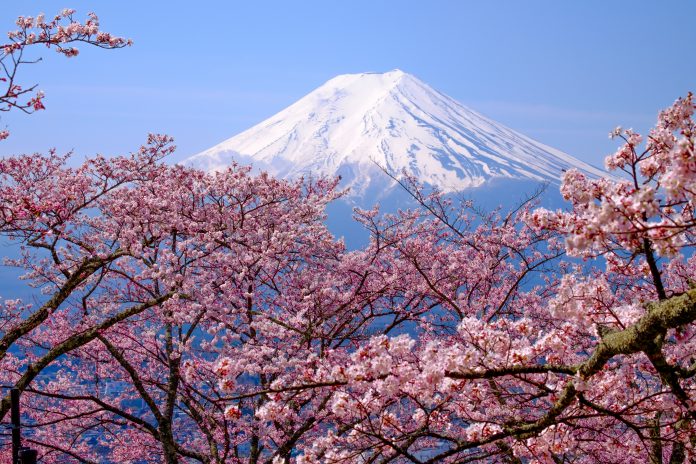Every year, millions of people worldwide flock to Japan to witness the extraordinary phenomenon of the Cherry Blossom season, where a sea of sakura flowers carpet Japan’s gardens, streets and river banks in pink hues.
There are tourist traps and there are tourist traps. According to me, Japan’s Cherry Blossom season could be rated as amongst the Top 10 tourist traps in the world.
Cherry blossom trees represent hope, new life and beauty and there are a plethora of festivals around these trees. These celebrations are driven by a lovely concept called ‘hanami,’ a Japanese custom that dates back centuries and consists of visiting parks and other outdoor locations to appreciate the blossoming of cherry trees (sakura) and sometimes plum trees (ume).
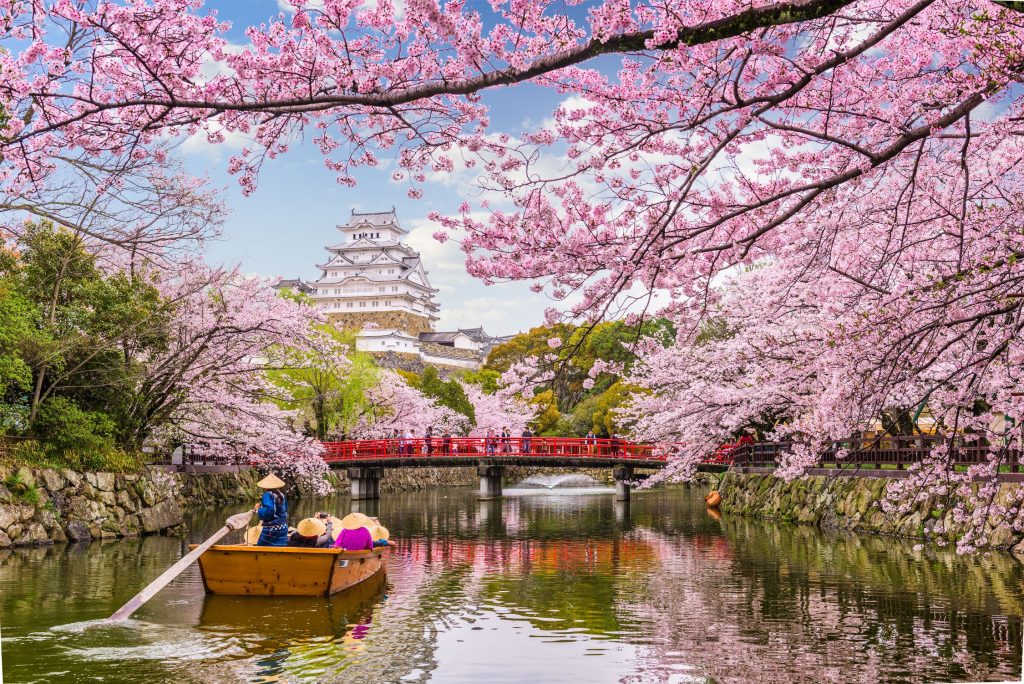
In Tokyo, we were driven to the Imperial Palace around which there is a moat. There are around five hundred trees around the moat; one can go paddle-boating in the water. The trees are cut so that they grow in a certain way, the branches hanging down making it a very beautiful sight. In Tokyo, there is also a park – Ueno Park – where visitors, mostly Japanese and few tourists, explore the cherry blossoms surrounded by lanterns, food booths. Corporates have office picnics in this park. I saw two groups seated on large blue polyethylene sheets— both men and women in business suits— trying to enjoy a picnic.
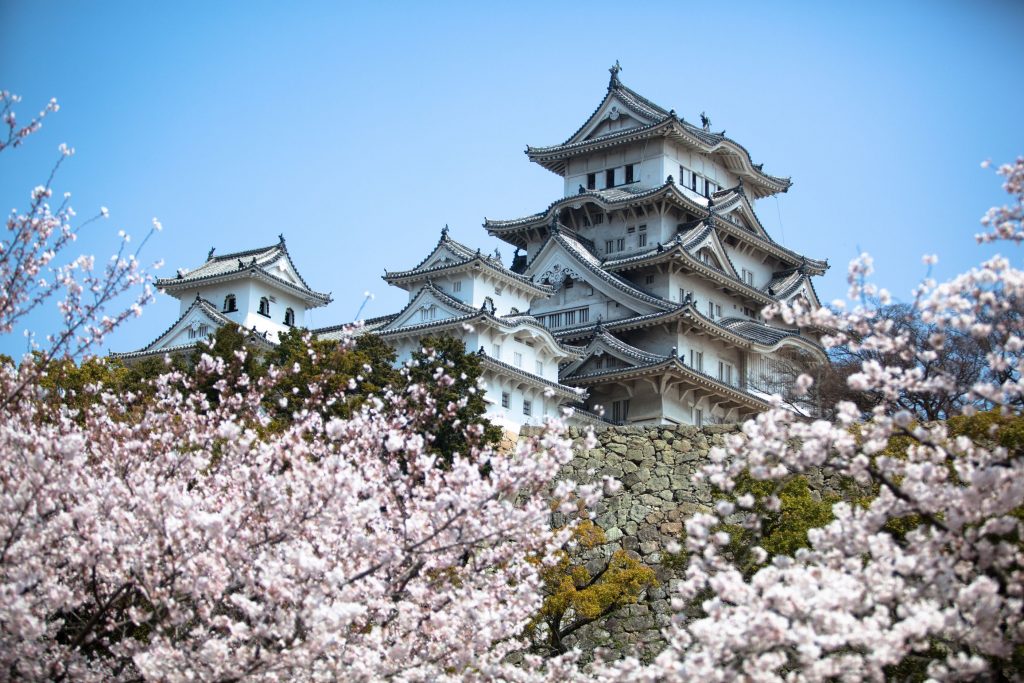
Each city has its own cherry blossom meadow and the best time to visit Japan to see the cherry blossom is late March and early April. Such is the popularity that hotels and flights are completely booked months in advance at sky high prices. This is Japan’s high season. The first two days in Tokyo we had rain, strong, cold breeze, and the sun was hardly visible.
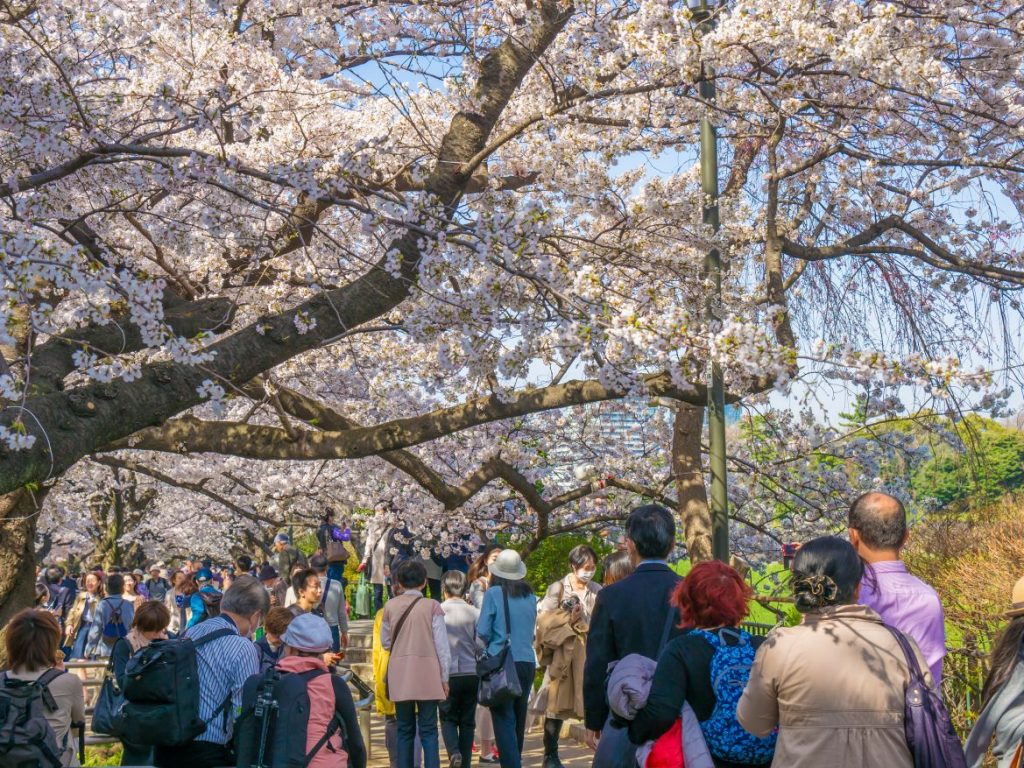 On the third day, there was bright sunshine and we went cherry blossoming. Japan is known for its gardens, well-manicured hedges, lawns and rows of cherry blossom trees that lure the world. A Japanese garden creates a beautiful peaceful atmosphere that makes people feel like they are in another time and place. Some cities have rivers and canals flowing through them. Long stretches of sakura trees flank either side of the canal, lanterns illuminate the cherry blossoms drawing large crowds of Japanese in the evening.
On the third day, there was bright sunshine and we went cherry blossoming. Japan is known for its gardens, well-manicured hedges, lawns and rows of cherry blossom trees that lure the world. A Japanese garden creates a beautiful peaceful atmosphere that makes people feel like they are in another time and place. Some cities have rivers and canals flowing through them. Long stretches of sakura trees flank either side of the canal, lanterns illuminate the cherry blossoms drawing large crowds of Japanese in the evening.
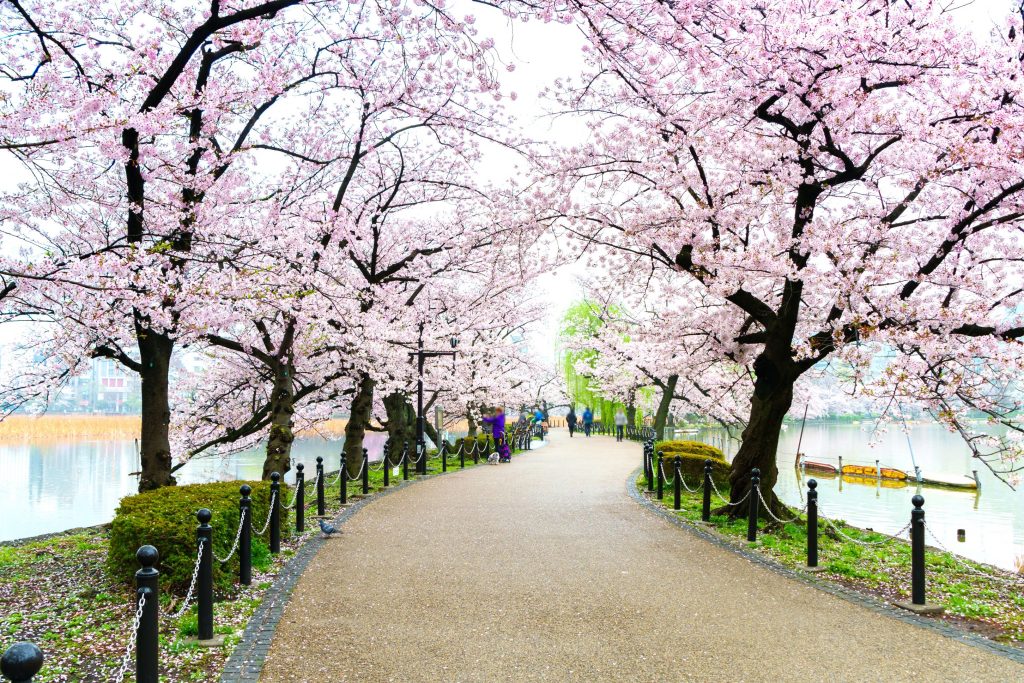
Japanese Cuisine
Japan is a foodie’s paradise, there are as many Michelin star restaurants as there are beauty salons in Mumbai. The sushi as we know it in India is completely different in Japan and we need to put out of mind any preconceived notion about what Japanese cuisine really is. There are restaurants that serve vegan meals. Subtlety and finesse are the hallmarks of Japanese cuisine. The food culture is very different, very rapidly changing and very diverse. You could find an Italian restaurant serving authentic pasta and pizzas the kind you would eat in a fine restaurant in Italy. Similarly, Mexican, Peruvian, American, French cuisines have well-known Michelin restaurants. The problem is to get a booking. Often, during the season, they are booked much in advance and walk-in is almost an impossibility.
At the heart of Japanese cuisine, is sticky rice that is easy to pick up with chopsticks. Japanese respect and the reverence for rice is so great that it is not flavoured or seasoned with spices or sauces.
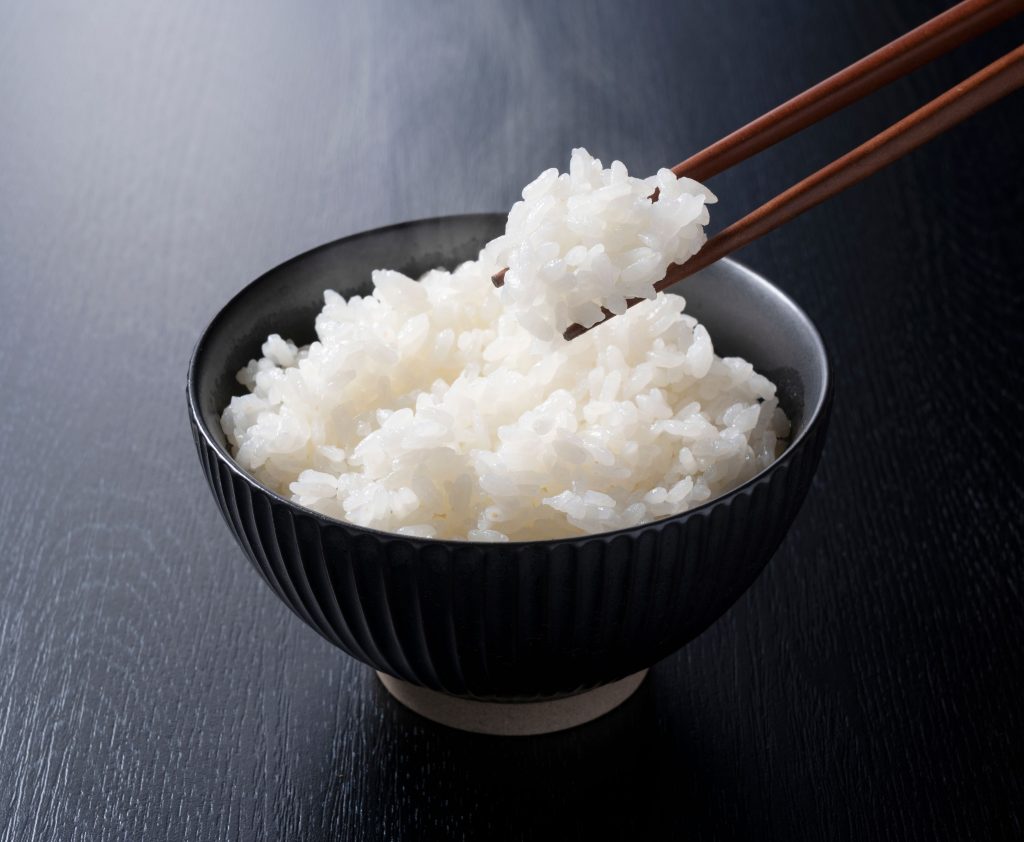
Rice is indisputably the central staple and is even made into noodles. Ramen is a much more recent invention—proper, fresh ramen noodles, not the instant noodles in grocery stores. Every town has small restaurants serving hot steaming ramen noodles as their principal dish and are extremely popular having a dedicated clientele.
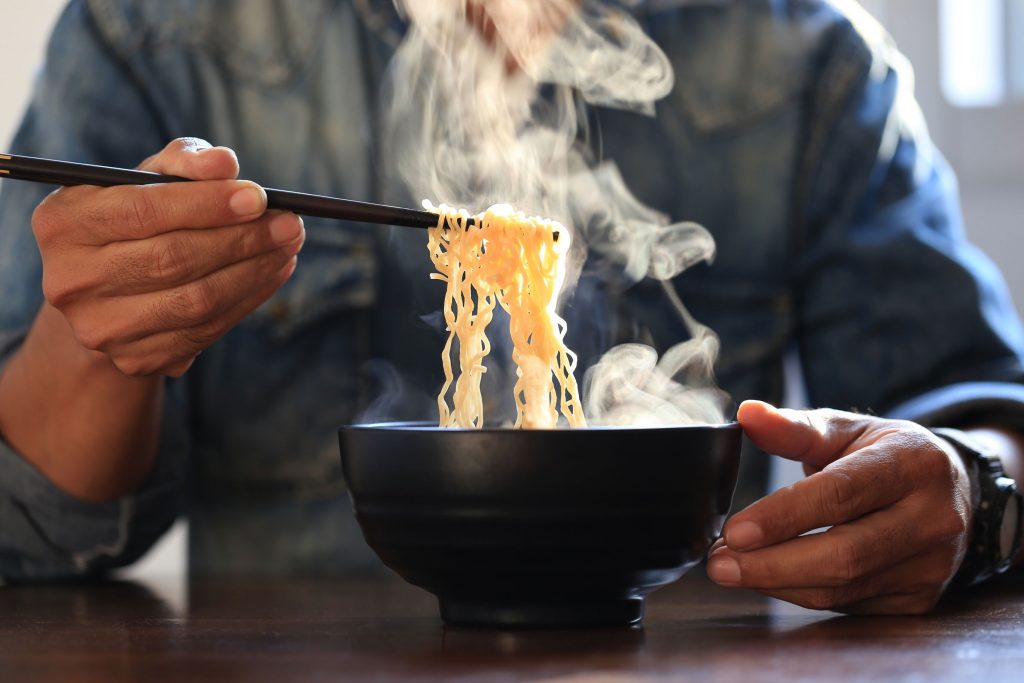 Japan is surrounded by water; therefore, you’re never very far from the sea. Fish is probably the second-most popular ingredient in Japanese food. Fresh, as could be found or salted, pickled, or preserved in some way, seafood is an important part of every Japanese meal.
Japan is surrounded by water; therefore, you’re never very far from the sea. Fish is probably the second-most popular ingredient in Japanese food. Fresh, as could be found or salted, pickled, or preserved in some way, seafood is an important part of every Japanese meal.
There are also a slew of vegetables in Japanese cuisine. Daikon radish (our mooli) is probably the most popular, cut into impossibly thin sticks. The daikon is sliced with a long knife and as it is sliced, it is turned, and we get this long, thin ribbon cut from the root with this very narrow blade, and then that’s sliced and cut into tiny little sticks. Daikon can also be pickled yellow. Wasabi is a strong mustard root in Japanese cuisine. It is highly pungent and can get straight into your nostrils. It is to Japanese cuisines what chilly and teekhi chutney is to Indian cuisine.
Japanese condiment for sushi. Soy sauce, wasabi, pickled ginger, chuka, sesame sauce and pickled radish, classic sauces in traditional Japanese cuisine
Pickling is popular in traditional Japanese cooking, but it is usually very simple salt fermentation. It is not vinegar-cured with dill and garlic like a traditional cucumber pickle. The pickles come at the end of a Japanese meal, and they contrast with the blander flavour of rice. The most popular of all pickles is the Ginger pickle.
Soybeans are also clearly central. They’re eaten boiled and cold as edamame. They’re made into tofu again with a large variety of cooking methods. Tofu is a great source of protein. The miso paste is also made from soybeans and there is a sizable culture of cooking and eating miso. The Japanese have five basic flavours – Salty, Sour, Sweet, Bitter and Umami. It is very accepted and appreciated practice to slurp on your food, it’s a sign of appreciation.
The strange thing about Japanese restaurants is that they do not serve sugar with their tea and coffee. One has to ask for sugar. Similarly, there is no salt on the table. If you require salt, the waitress will fetch it from another table and in case someone else wants, she will pick up the salt from your table and pass it around. Maybe less salt and less sugar is the secret of Japanese good health.
Most hotels in Japan do not have a normal breakfast buffet. It is only a Japanese breakfast buffet that shuts at 9am, and after that it’s not available.
There are restaurants in Japan that sell canned food, so you can choose from three to four hundred dishes and it is served within a short time. These are ideal for people who don’t cook at home and want to eat a different meal every day. Ice-creams in Japan are weird, they could be topped with mayo or even seafood and horse meat.
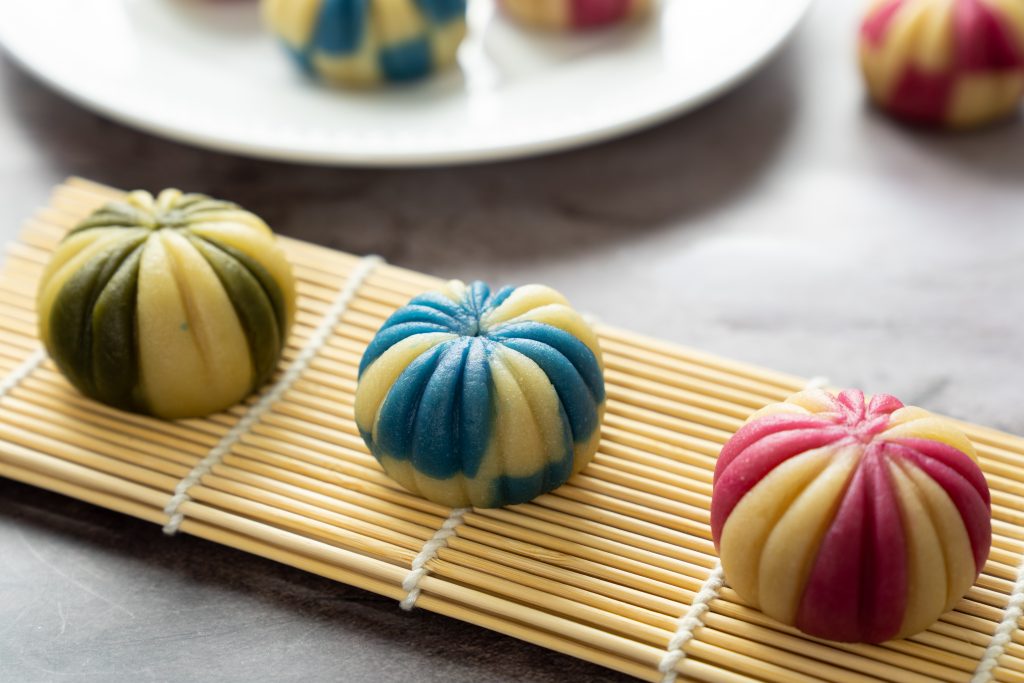 Japanese confectionery is amongst the best in the world. It competes with the Swiss, Belgium, French and Italian. This is not something the Europeans will agree on, but without doubt, the cakes, the chocolates, the savories are on par or in some cases even better than the European stuff.
Japanese confectionery is amongst the best in the world. It competes with the Swiss, Belgium, French and Italian. This is not something the Europeans will agree on, but without doubt, the cakes, the chocolates, the savories are on par or in some cases even better than the European stuff.
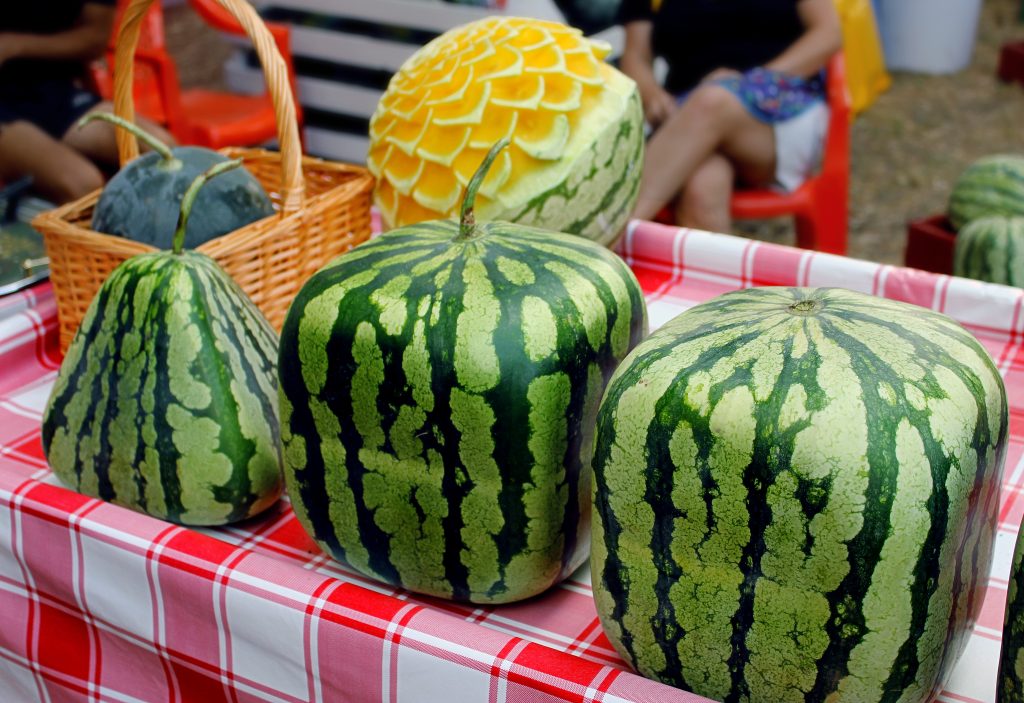 The Japanese have made great strides in fruit and agriculture engineering. They grow white strawberries, square watermelons in different varieties, seedless non-seedless, red and yellow colors. Their melons are a delight, purple colour mangoes that are large and one mango can feed a family. Their peaches, oranges, and tangerines are simply irresistible.
The Japanese have made great strides in fruit and agriculture engineering. They grow white strawberries, square watermelons in different varieties, seedless non-seedless, red and yellow colors. Their melons are a delight, purple colour mangoes that are large and one mango can feed a family. Their peaches, oranges, and tangerines are simply irresistible.
Japanese culture
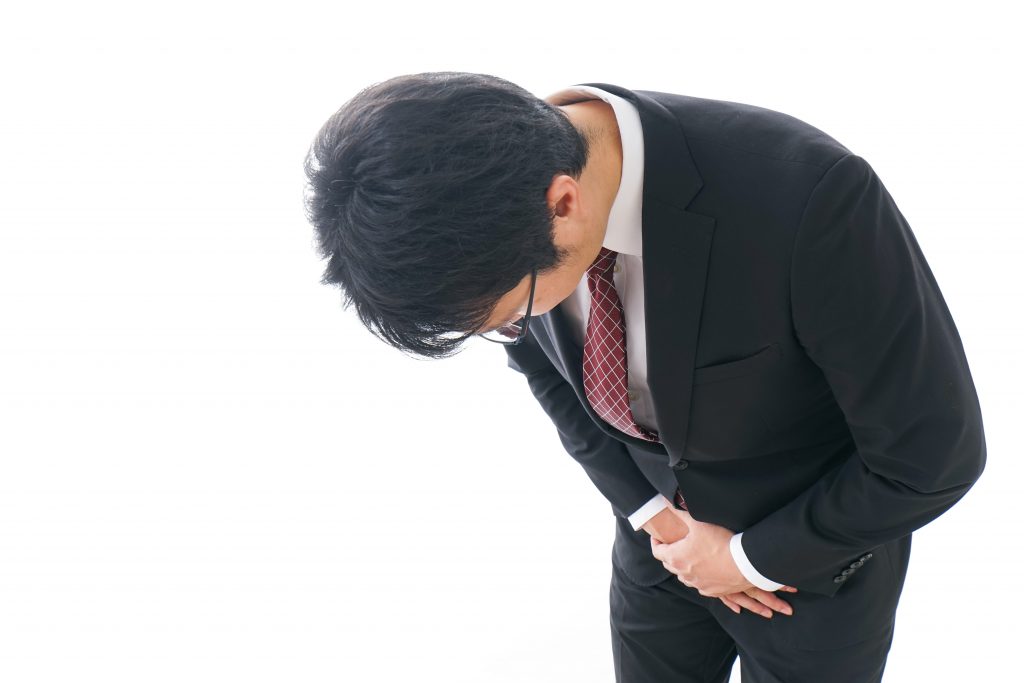
Politeness is in the DNA of Japanese culture. Respect is a huge part of the Japanese cultural etiquette and the bow encapsulates this perfectly. The concept of bowing is simple and basically shows that whatever your social status is, you are lowering yourself and putting yourself in a position that is vulnerable. Bowing demonstrates to the other person that you are placing them over yourself and that you are thankful for your interaction with them. 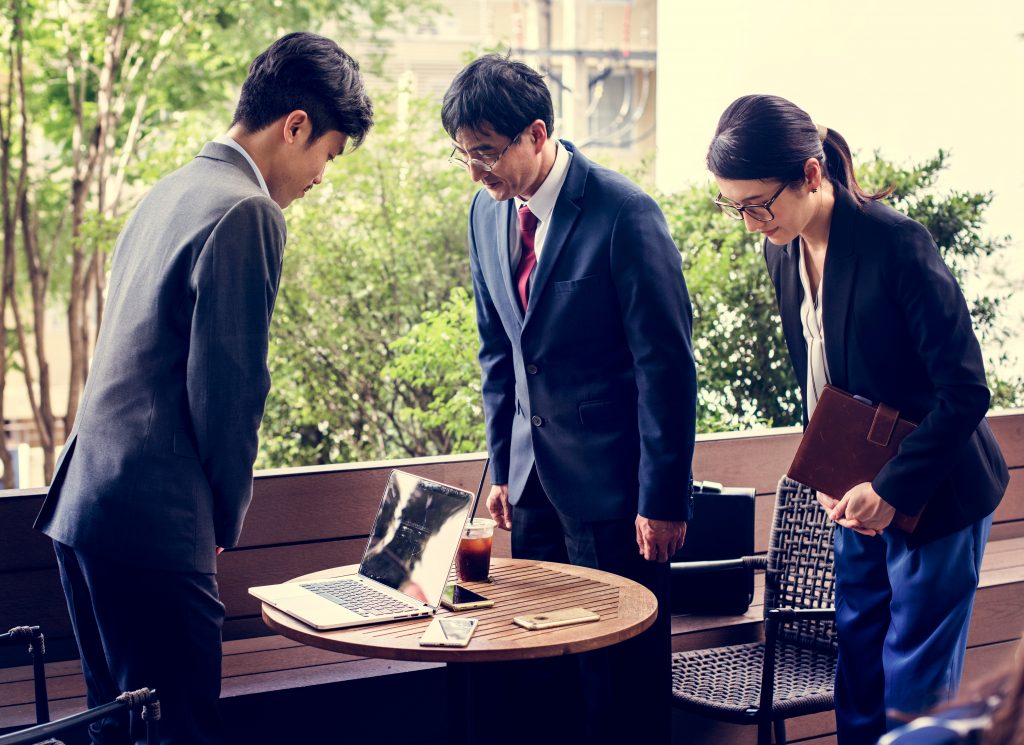
The service staff are incredibly polite. The waiters, the concierge, the taxi-drivers, and the sales people treat you with a lot of patience and respect.
Japan is an unbelievably clean place. Part of it has to do with a shared sense of community. The belief that we all share this living space and that we all have a responsibility to care for it. Cleanliness is a physical manifestation of this mindset. In Japan, even busy streets tend to be clean for two reasons: people litter less, and people clean more – and not just after themselves. It is a common sight to see someone picking up litter along a street. Cleanliness makes the quality of life in Japan better, not only because it fosters a sense of community but also because it makes everything more convenient. Public spaces are more usable, and people are more willing to use it. You have to put your litter in your pocket and take it home to throw it. There are no litter bins on the streets.
Japanese inculcate a sense of discipline in their children, right from school. Children clean up after lunch. They are taught to clean the school premises and even the toilets. CEOs and head of companies often announce that they clean their own toilets and it’s a virtue to be proud of.
 The Japanese have the most advanced toilets in the world. As soon as you enter the bathroom, the toilet cover opens automatically. The toilet seat is warm and after you have finished your business, there is a button on the side that you press and a little tube squirts water on the spot. Yet another little tube squirts on a larger area. Press another button and air is released that circulates within the toilets. Finally, as soon as you get up, the toilet flushes itself. Some even have music.
The Japanese have the most advanced toilets in the world. As soon as you enter the bathroom, the toilet cover opens automatically. The toilet seat is warm and after you have finished your business, there is a button on the side that you press and a little tube squirts water on the spot. Yet another little tube squirts on a larger area. Press another button and air is released that circulates within the toilets. Finally, as soon as you get up, the toilet flushes itself. Some even have music.
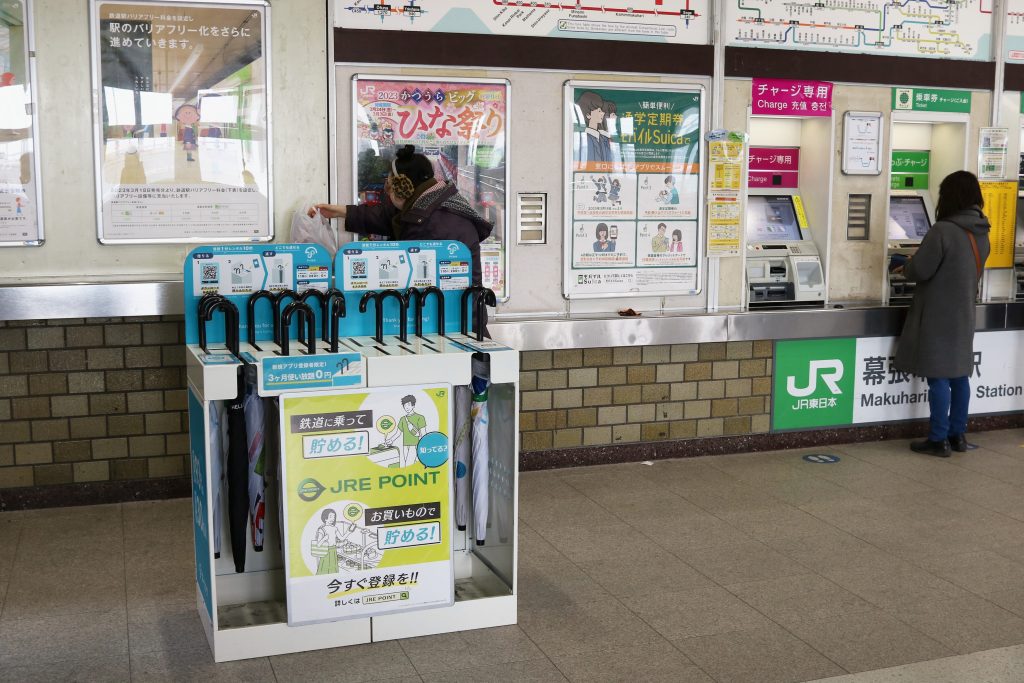 Outside every building, there are unique umbrella stands where an umbrella is locked into a standing position and you can take the key and once you return it, you can unlock and retrieve your umbrella. This prevents you from carrying your wet umbrella into the building where you are going. There is no puddle or mess because of your wet umbrella.
Outside every building, there are unique umbrella stands where an umbrella is locked into a standing position and you can take the key and once you return it, you can unlock and retrieve your umbrella. This prevents you from carrying your wet umbrella into the building where you are going. There is no puddle or mess because of your wet umbrella.
The bullet train is Japan’s super-fast, super-safe and super-efficient mode of transport. Japan has one of the world’s most efficient public transport systems. Remarkably, punctual trains make inter-city transportation one of the best things about travelling in Japan.
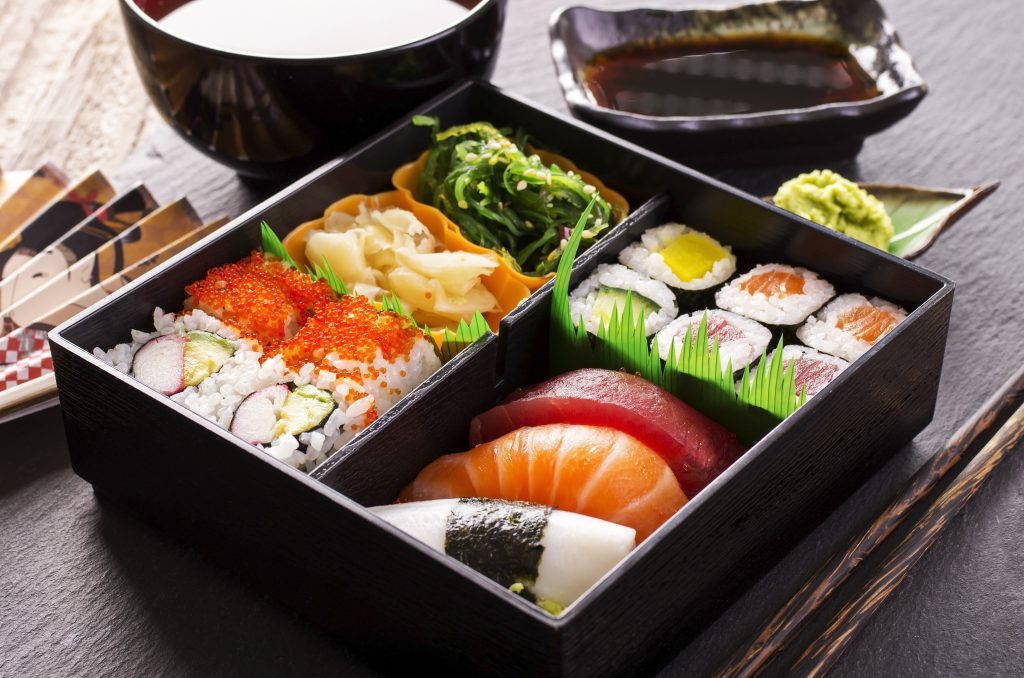
Japanese railway stations have large food courts and serve an unbelievable variety of food that you can eat there or little boxes that you can buy and eat on the journey. These little boxes are called bento boxes and there is a unique culture that goes into packaging food in these boxes. Japan has millions of vending machines that allow you to buy all kinds of food and other daily use stuff.
Even in a big city like Tokyo, you can easily enjoy Japan’s natural beauty. Japanese people love nature, a love that is deeply rooted in Shintoism, a religion that is intertwined with Japanese culture and everyday life. Shintoism is based on the worship of nature where natural objects are sacred. Japanese shrines embody this spirit. In cities, shrines are a natural oasis of serenity. Outside the cities, shrines will often be situated on a mountaintop. If you visit such a shrine, it makes for a nice (and usually mild) hike with a beautiful view. And of course, there is cherry blossom season where every corner of the country transforms into a postcard-perfect scene. The shrines are almost similar. Huge tall Pagoda-like structures where somewhere in the hall is a statue of the Buddha. You see one and you have almost seen them all.
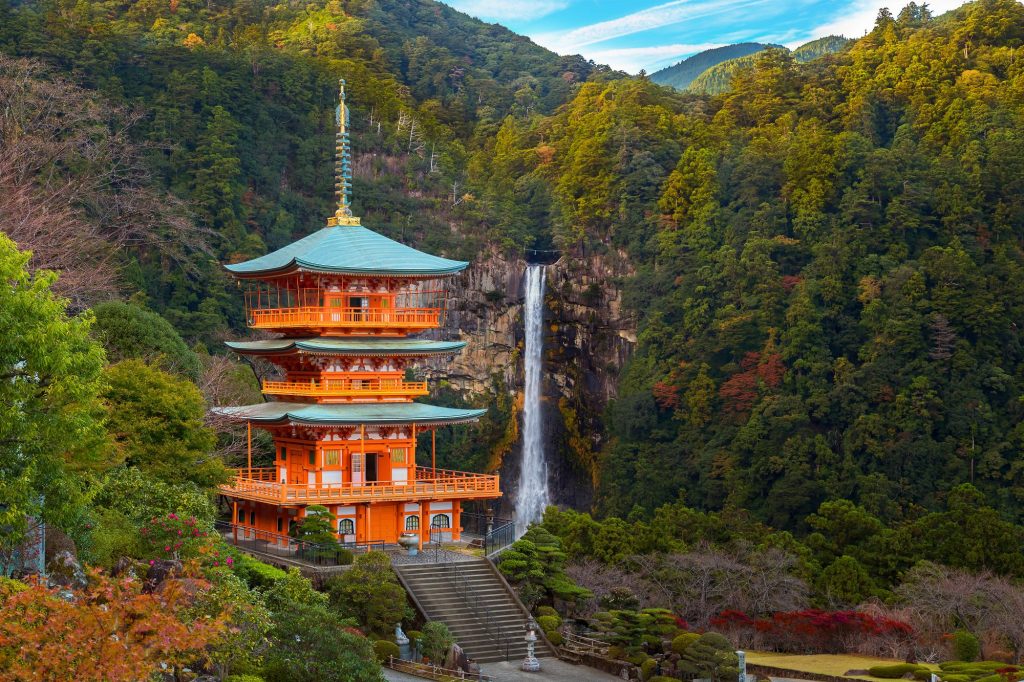 The Seiganto-ji Temple in Wakayama Prefecture
The Seiganto-ji Temple in Wakayama Prefecture
In Tokyo, there is a crossing called ‘Shibuya’ where 5000 people are supposed to cross the roads every time a signal permits. Tourists flock to see this phenomenon. I thought it was grossly exaggerated. I stood there for 10 minutes and could not get to the 5k figure. In my estimation, it would be five to seven hundred on the outside limit. I thought it was a con. So, is the Tokyo tower. Japanese cities are dense, concrete jungles. Tall intimidating buildings, lots of people on the sidewalks and little markets that are so crowded that one has to wade through them. Yet, it is an orderly society, one doesn’t see any street fights or rowdy behaviour.
Japan has a tremendous amount of junk merchandise. Right from nail-cutters, makeup stuff, massage equipment, socks, handkerchiefs, crockery, cutlery, chopsticks, ready-to-eat snacks and foods. You name it and the Japanese have 10 varieties of the most inane stuff. The world’s largest variety of KitKat is available in Japan. There are countless street bazaars that sell everything from food, confectionery to home and houseware, and all kinds of junk merchandise that every tourist buys.
Travelling to Japan is not easy. ANA, the national airlines takes off from Mumbai and you land at Narita Airport. The immigration takes an hour plus. Narita airport is tacky, worn out and two hours away from the city. The ANA hostesses are slow in service and do not understand English. The announcements are almost inaudible. The food is not standard. For example, two vegetarian meals could be different from each other. The airline staff does not understand the concept of cocktails or mocktails. Food from Japan to India has a lot more and a better variety, whereas food from India to Japan has much fewer choices. The aircraft is full with two or three large tour groups from India. On the way back, we tried to buy Japanese whisky at the airport and strangely it was not available.
Japan was an important tick on my bucket list. Would I go back? Not really. Japanese cities are concrete jungles, over-populated and everyone is in a tearing hurry. Japan has a large number of world class specialty restaurants. The people are incredibly polite, you don’t have to tip, yet it’s not a fun place. Some destinations are best watched on YouTube.



